י״ח ניסן ה׳תשפ״ב | April 18, 2022
“Lamdeini” Does Not Teach Kriah with Phonetics
From the Anash.org Inbox: In response to a claim that kriah phonetics was approved by the Rebbe in the “Lamdeini” curriculum, Dr. Bunim Weinbaum, the booklet’s creator, clarifies that those sounds weren’t meant for phonetics at all.
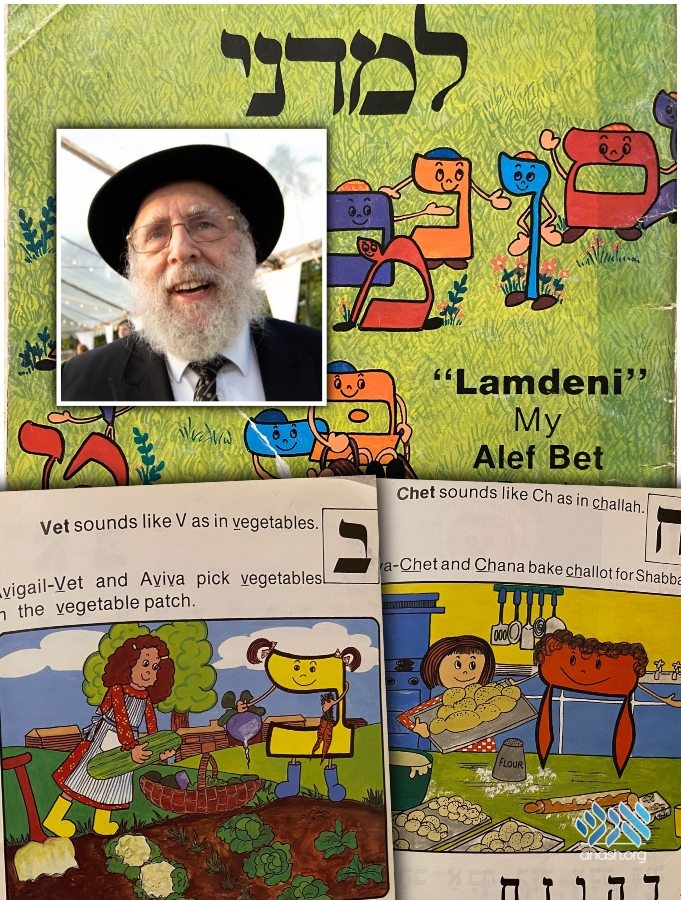
From the Anash.org Inbox: In response to a claim that kriah phonetics was approved by the Rebbe in the “Lamdeini” curriculum, Dr. Bunim Weinbaum, the booklet’s creator, clarifies that those sounds weren’t meant for phonetics at all.
By Dr. Bunim Weinbaum – London, UK
It was brought to my attention that some are mistakenly deriving from the book “Lamdeini” – which I created – that one should be teaching children Kriah in the “Phonetics method.”
I would therefore like to clarify the point of the book:
In 1971, my wife and I had Yechidus with the Rebbe. I was involved in teaching in Sunday Hebrew school where there were problems with learning to read Hebrew.
The Rebbe told me that it is very important to teach Alef Beis by teaching the names of the letters and vowels first. This is statistically a more successful way of teaching and also strengthens the emunah of the children who are learning. It is also important to use words from the Siddur and Chumash to increase the child’s familiarity.
The Rebbe went on to say “If at any time you have the opportunity to produce a book to teach Hebrew reading in addition to what I have mentioned you should ensure that there are no pictures of girls and boys on the same page, and there are no pictures of treife animals or names of treife animals included in the text.”
The Rebbe concluded this part of the yechidus by blessing me that with Alef Beis I should “blaze the trails of Yiddishkeit” (those were the exact words in English).
10 years later, the opportunity presented itself to make a Hebrew Reading book for the ‘United Synagogues of Great Britain.’ Indeed, we followed the Mesorah method using the original text of the Mavoh Lekriah printed by Merkos L’Inyonei Chinuch.
However, there was one challenge: many of the Sunday school parents could not read Hebrew themselves making it impossible for them to practice with their children. I, therefore, created an English mnemonic on the top of each page as an aid memoir for the parents so they could help the children. A Teacher’s Guide was produced to go along with the book to explain how to teach using “Komatz Alef Uh.”
When the proof of the book was shown to the Rebbe before we went to print, he commented, “Teshuois chein, teshuois chein, me’or ainayim.”
Indeed, the child-friendly pictures and the use of color were quite revolutionary at that time, but it certainly made the book attractive for children and something they were proud to own.
It’s important to emphasize that the English mnemonic on the top of the page was intended to assist the uninitiated parents, and it was never intended that the book should be used to teach the children with phonetics.



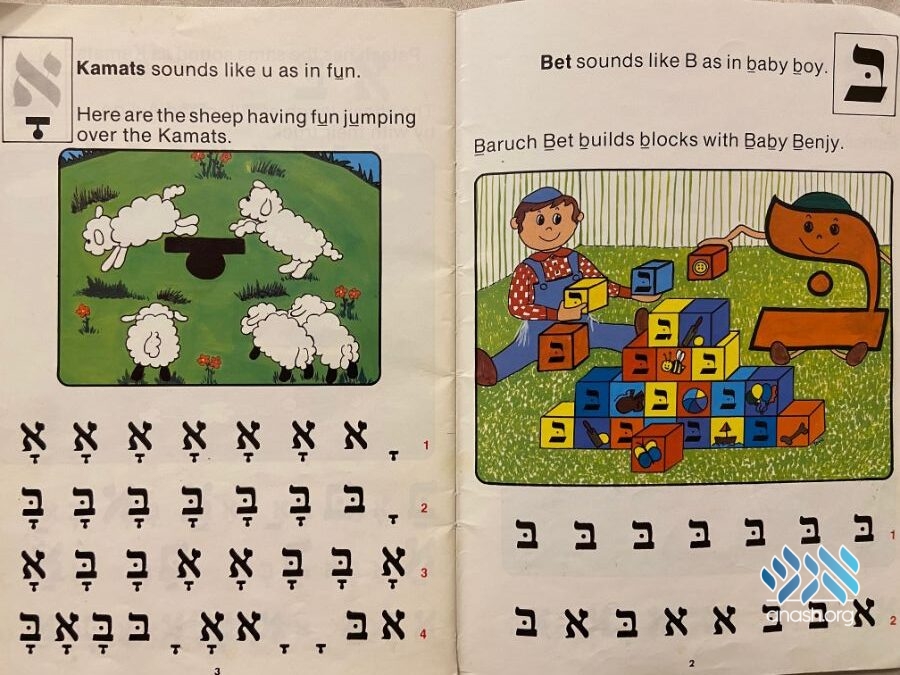
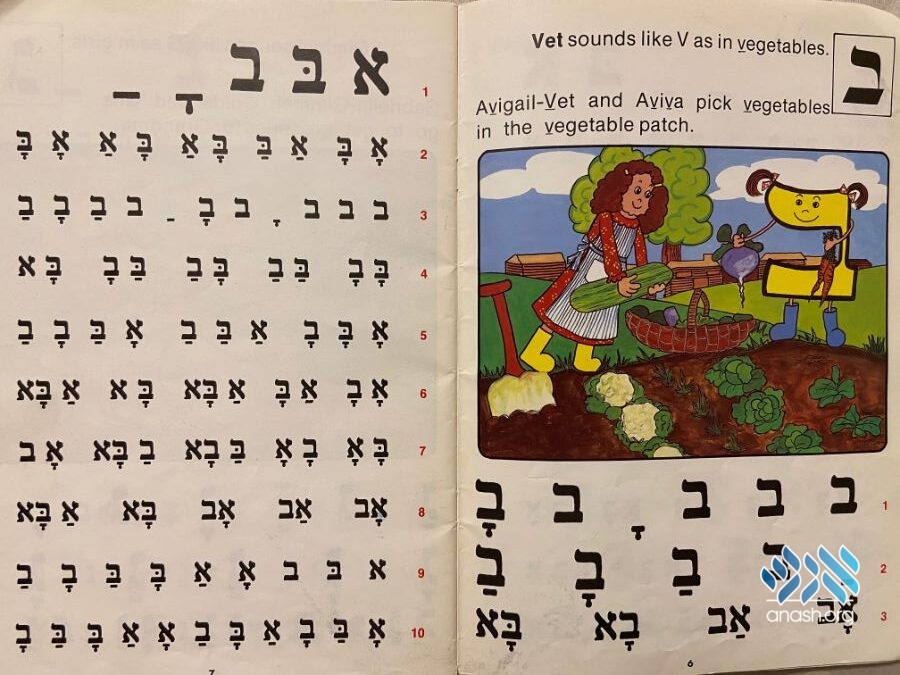
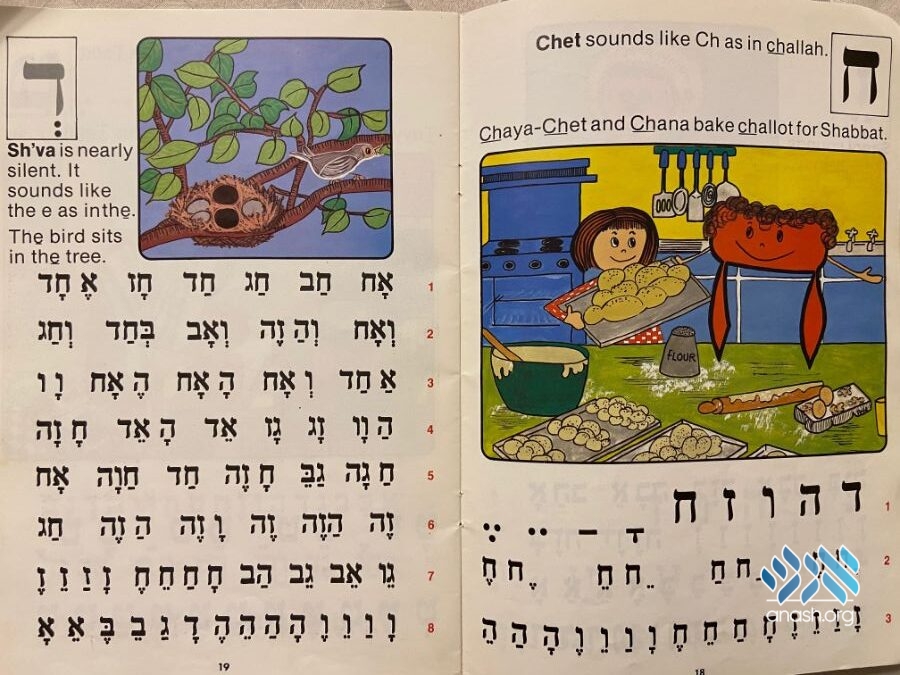
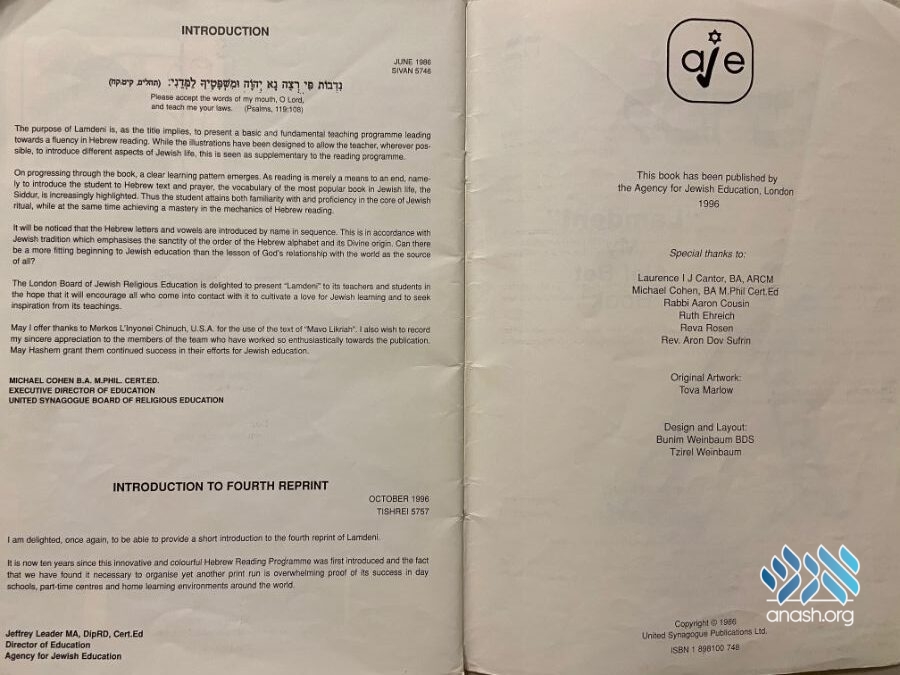
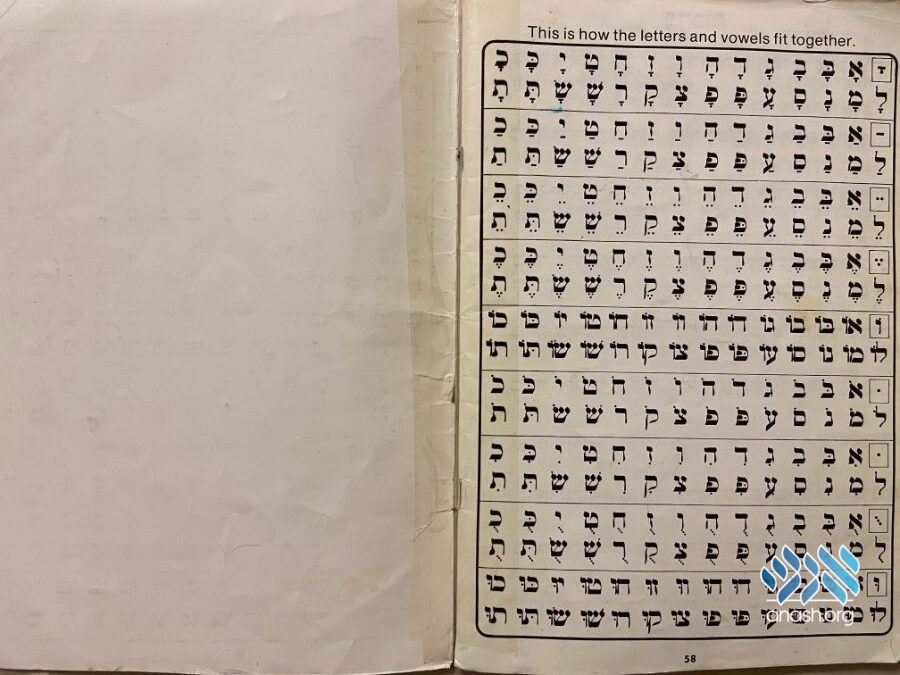
Is the teacher’s guide available?
Also, if the mnemonic on top was only for the parents, what is the value of the picture?
So- child friendly pictures and sentences that bring out the sound of each letter and nekuda were used only for parents (not chas v’shalom the children) and only to help the parent do kamatz alef uh (but not chas v’shalom to identify the sounds)?
And in the many schools in England that used this book, none of the teachers/ parents used the mnemonics on each page to teach the children the sounds of each letter and nekuda? Or was this book machshil es harabim into teaching children sounds?
In answer to numerous what’s apps and emails, I would like to clarify one point. There is no doubt that the additional benefit of the mnemonic was to reinforce the children’s learning, but it was not a replacement for teaching with Kametz Alef oh, which is the Mesorah for teaching children (both young in age and young in learning) to read.
If this is the case, perhaps you would consider editing the article and headline accordingly to avoid further confusion.
No one suggested that Lamdeini was proof that we should omit Komatz-Alef Uh. The question was whether we may supplement Komatz-Alef Uh with the sounds of the letters and the sounds of the nekudos in order to strengthen students’ mastery, and Lamdeini was offered as proof that we may do so. Your clarification confirms that to be correct.
It seems that the original article and headline conflated these two issues (teaching sounds vs. omitting kamatz Alef uh, the latter of which has not been proposed by anyone).
Additionally, the way you describe the Rebbe’s instructions to you fits with what the rabbonim wrote, that the hakpada of the Rebbeim is that the names of the osios, nekudos, and syllables (Kamatz-Alef Uh) should not be omitted—not that sounds are forbidden as a supplement.
Utterly confusing. The writer of this article states that the book “Lamdeini” doesn’t use phonetics (except to “assist uninitiated parents”), but the actual pages ARE using phonetic clues.
For example, on the on the “Bais” page, the sentence meant for children reads “Baruch Bet builds blocks with Baby Benjy, with the letter “B” underlined to emphasize the sound. I thought only kamatz Bais Buh” is Mesorah?